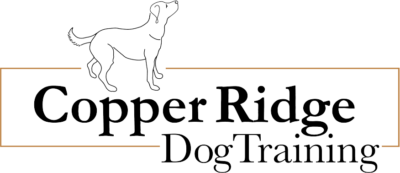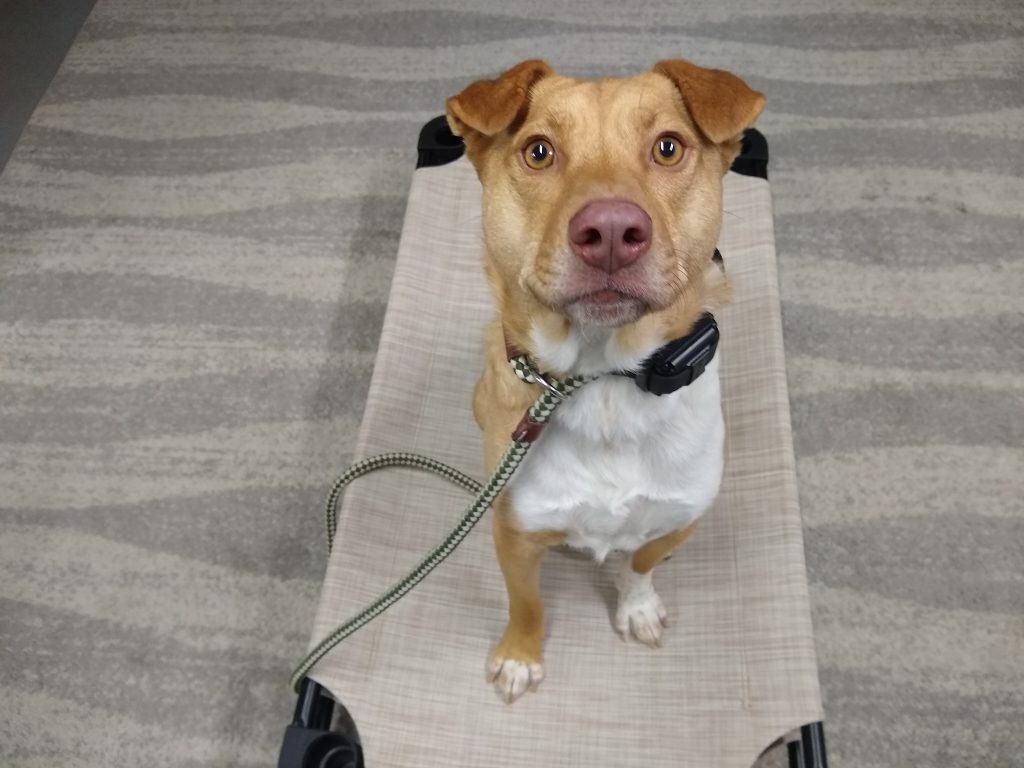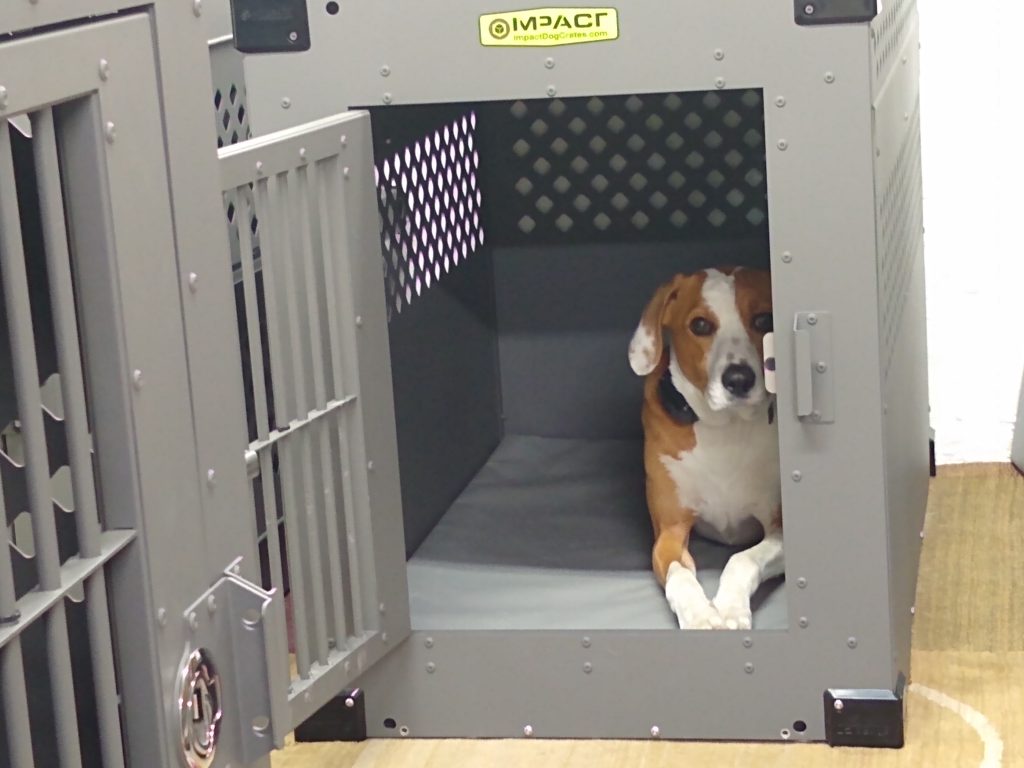Recall. It could save your dog’s life someday, so practice it!
We practice inside in low distraction-environments first to make sure the dog really understands what we’re asking of them. Here, Willow is practicing recall while we’re out of sight using the e-collar to help her. We use the pressure of the e-collar essentially as a game of hot-or-cold. As she gets closer, the stimulus from the e-collar lessens. If she gets farther away, the stimulus increases. This helps her understand exactly what we expect of her, and gives her the power to turn it off by finding her target (me). We do lots of repetitions to make sure she really understands this game. Did we mention that we’re on really low levels on the e-collar here? She’s working at a level 4 out of 100! That means she’s tuned in and ready to work.


